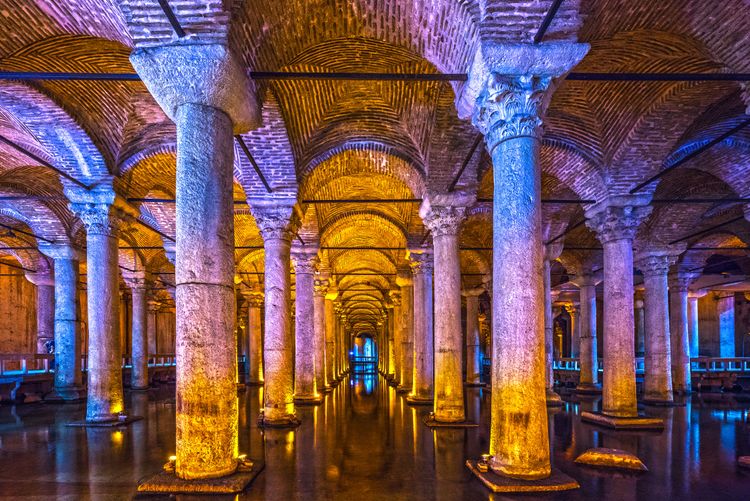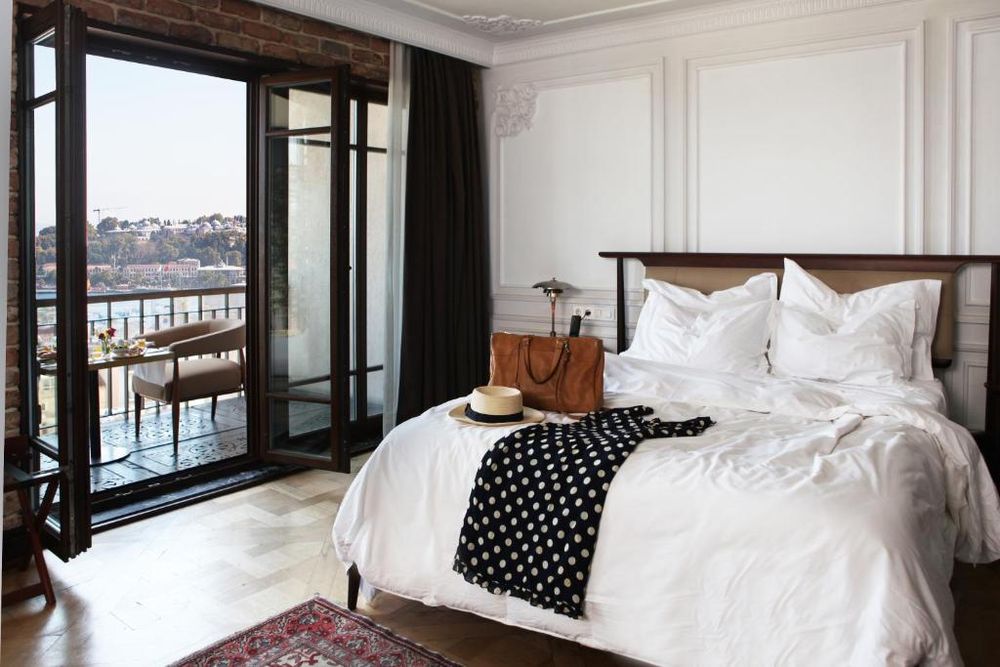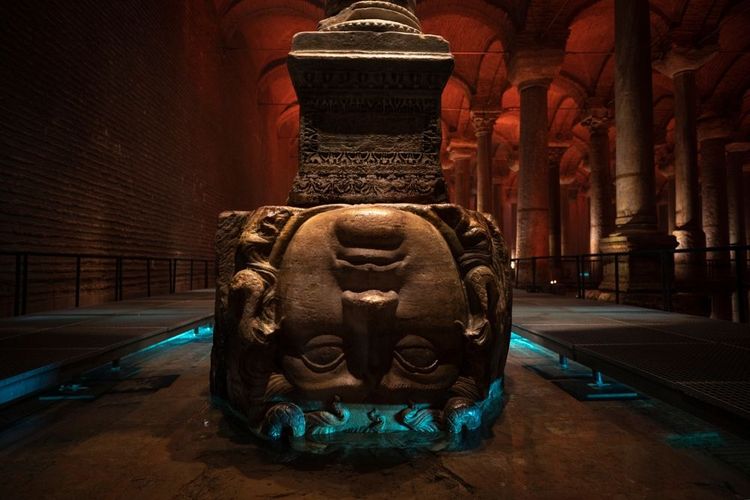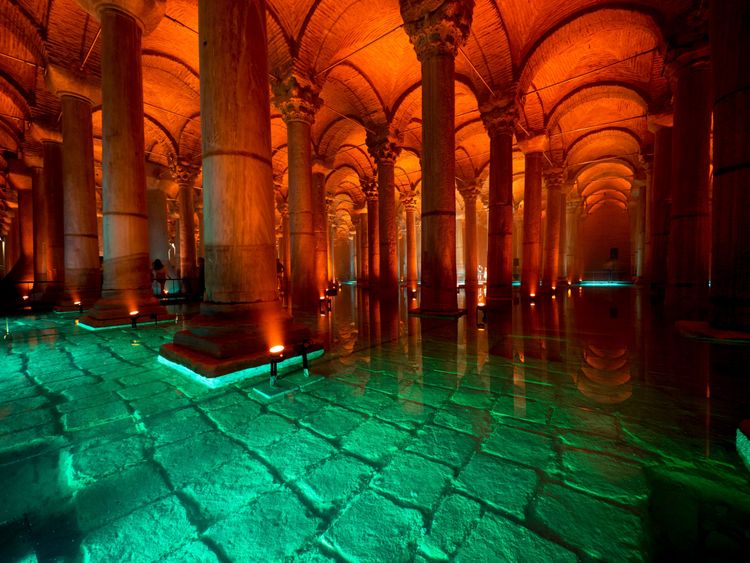The Basilica Cistern, located in the Eminönü district of Istanbul, next to Hagia Sophia, was built to supply water to the city of Istanbul during the reign of Emperor Justinian I in the year 542. The main purpose of the cistern was to meet the water needs of the Grand Palace and its surrounding buildings.
The cistern was neglected when Constantinople was invaded by the Ottomans. In 1545, the Frenchman Petrus Gyllius rediscovered the cistern when inhabitants told him that they could obtain water by lowering buckets into a dark space beneath their basement. In 1985, the cistern was cleaned and renovated by the Istanbul Metropolitan Municipality.













